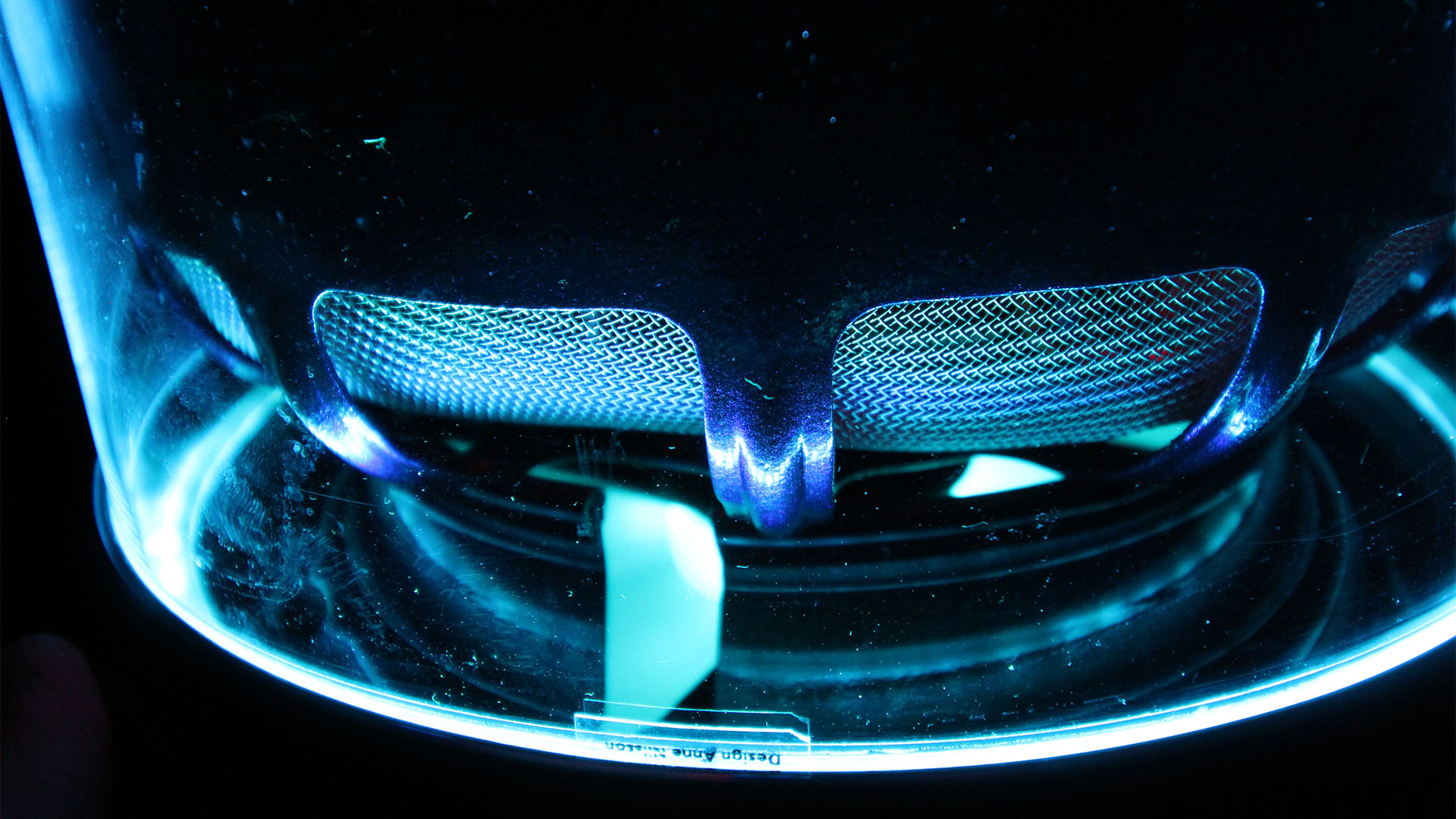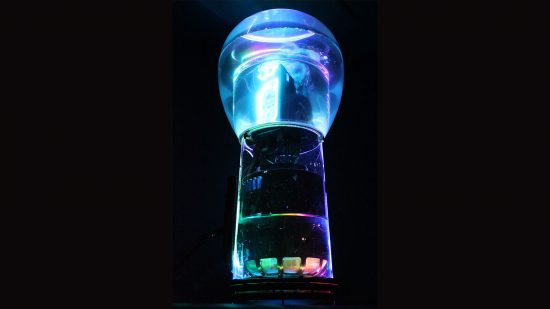We’ve seen many a steampunk PC build with analog dials and other archaic electronics gear stuck onto cases as aesthetic touches, but this retro lantern build goes one step further by making a pair of antique Harrison car radiators function as working parts of the mini-ITX PC’s water-cooling system. Built by PC modder Carl Collard, this unique gaming PC build is called Hope Lantern, with the PC on display under the lantern’s glass top.
Thanks to our rapidly growing PC building Facebook page, we’ve seen many custom gaming PCs, from mods based on existing case designs to scratch PC builds. You can even submit yours for consideration right here. Here we chat to Carl about how he built his Hope Lantern PC.
“The design idea came from the previous build I made, called Liz Art Lab,” Carl tells us. “The idea was to build a luminous, full glass version of it. The final design was also dependent on the material available during the construction.”
By far the most interesting part of this PC isn’t the computer system itself, but the shiny blue cylinder underneath it. Carl created this from two very rusty antique Harrison radiators, which he sandblasted, refinished, painted, and stuck together to create a shiny new radiator unit.

Can you actually cool a modern PC with antique radiators? “Absolutely!” Carl says. “Those two old Harrison Radiators make up the functional heat exchanger that cools down the water. I bought them on eBay.” The unit contains a Model H and an Atlas radiator, with a dual EK pump sitting in the hole in the middle of the radiator design. Believe it or not, the two radiators are over 80 years old.
That’s not the only interesting aspect of the blue cylinder design, though. It also contains the PSU, which was removed from its standard boxy chassis and sealed in the unit, with a large 230mm BitFenix cooling fan to shift hot air away from it. A 200mm Cooler Master MasterFan MG200R RGB cooling fan then sits at the other end of the cylinder.
None of this was easy, of course. “The hardest part was the restoration and modification of the rads,” Carl tells us. “They were damaged – one of them had several leaks – and I needed to make a few mods to get the fittings and dual pumps fitted onto them.”

The PC system itself then sits above the radiator/PSU unit, encased in a glass bowl to make the top of the lantern. It contains an Nvidia GeForce RTX 3080 Founders Edition, which has been fitted with an EK waterblock. The system looks like it’s also surrounded by oil, but Carl tells us that nothing is submerged when it comes to the bare components.
He explains that “the mineral oil and the water are inside a large reservoir made by a glass globe held, and sealed on the top of a modified Ikea glass vase. The computer itself is inside this big vase. In fact, the oil stays on top of the water and its purpose is 100 percent aesthetic.”

Of course, as a lantern, the system looks at its best in the dark, where the RGB lighting on the EK waterblocks shines through the oil andlo glass, and more lighting glows from the fan at the bottom of the radiator unit.
Remarkably, Carl did all the work on Hope Lantern by hand, and with limited funds as well. He tells us that he feels really satisfied by the end result, especially “considering the tight budget, and that I had no access to a CNC mill, 3D printer, or other fancy tools. I basically built this with hand tools – I am really proud.”
He also says that the PC is still working fine six months after building it. “My kids have used it every day since December 2022, without any issues.”

Hope Lantern PC build specs
- CPU: Intel Core i5-9600K
- Motherboard: Asus ROG Strix Gaming Z390-I
- Memory: 16GB G.Skill Trident Z RGB 3200MHz
- Graphics card: Nvidia GeForce RTX 3080 Founders Edition
- Storage: 1TB Samsung 970 Evo Plus
- PSU: 750W Seasonic SS-750XP2S
- Cooling: 200mm Cooler Master MasterFan ARGB fan, 230mm BitFenix Specter Pro RGB fan, EK waterblocks
- Cables: CableMod Pro ModMesh Carbon cable extension kit
There’s so much we love about this PC build, from the working antique radiators to the light-up PC lantern at the top. Carl has done a top job here, and he’s put in a lot of elbow grease getting the radiators up to scratch as well. If you’re new to the world of water-cooling, then make sure you also read our full guide on how to water cool your PC.
This post originally appeared on Custom PC, which has been covering amazing setups for over 20 years and is now part of PCGamesN. Join our nearly 500k member Facebook group to discuss this build.
If you consider yourself to be an expert PC builder, you can submit your own custom PC build to us today for a chance of being featured on PCGamesN in the future.
